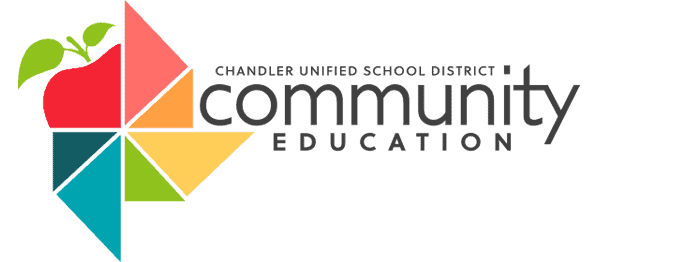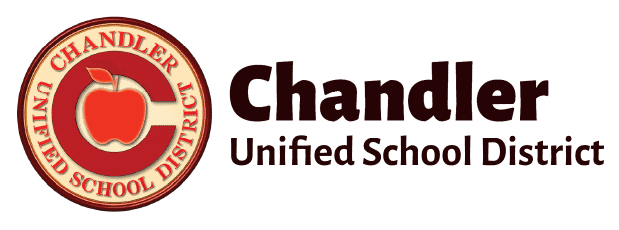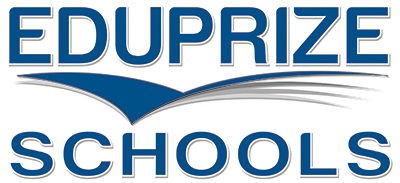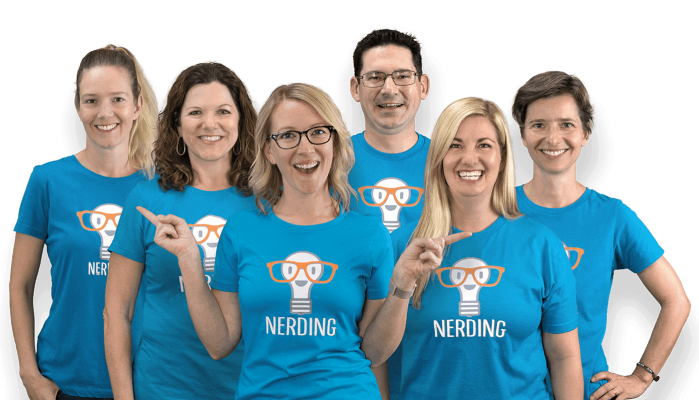Spark Curiosity in YOUR Classroom
In-School
STEM Experience
Discover our innovative in-school STEM programs that spark students’ curiosity and love for learning. Our hands-on, interactive activities and projects provide students with an engaging educational experience that prepares them for future careers.
For Grades K-6
Our Partners in Education






We Come To You!

Welcome to our In-School STEM Experience program, where learning becomes an unforgettable adventure! We’re excited to bring the wonders of science, technology, engineering, and math directly into your classroom through our engaging and interactive lessons. With our hands-on experiences, we aim to inspire young minds, foster curiosity, and cultivate a passion for STEM subjects — without the hassle of an off-campus field trip.
Eliminate the hassle of off-campus field trips.
By bringing our expert instructors directly to you, we eliminate the hassle of off campus field trips, making it easy to integrate STEM into your curriculum.
Keep that familiar envirionment for the kiddos.
Our In-School STEM program offers a unique opportunity for students to explore STEM concepts in a familiar and comfortable environment—their own classroom!
All the value, with none of the prep, work, and clean up!
We get it. The flashy science and STEM lessons are SO much work to prep, but we all know they are so important and make the kids exclaim, “Best day EVER!” Let us handle the tech and mess and chemical safety.
Range of Arizona standards aligned, hands-on topics.
School staff and kids love us!
The teachers are engaging!
My kids have done 4 classes and they have had amazing experiences. The teachers are engaging and the activities are creative. Great summer time learning!
...Emma K
Incredible program for “nerdy” kiddos!
Nerding is an amazing program. Niecy and Micah have made an incredible program for “nerdy” kiddos to learn and play and my own children LOVED every minute.
...Jenn B
Highly recommended!!
My son loves the Nerding classes! So awesome they offer them during the summer too! Highly recommended!!
...Heather G
Micah and Niecy were so nice!
I called to inquire more about the teachers and classes, and they [Micah & Niecy] were so nice and informative! I just signed my son up for a few classes and I think he will have the best time!
...Jessica Edwards
The teachers were both very friendly and patient
My kids were drawn to the 3D sculptures and bubble-making activities during the meet-the-teacher event at Eduprize. The teachers were both very friendly and patient, and they worked well with the kids.
...Angela F Tetschner
We were very impressed!
My daughter and son saw your booth outside of their school and were so intrigued with your bubble making and 3D machine. Your company was so friendly and knowledgeable. We were very impressed!
...Angelique P
The greatest influence on my daughters!
Nerding has been the greatest influence on my daughters every summer! They always look forward to summer because they know that also means nerding! They learn, they play, they have fun-and it gets them engaged in science outside of Nerding as well! I highly recommend signing your kiddos up for a class! The teachers are […]
...Amy J
Always so excited to show off what he learned.
My son loved his superhero’s gadgets classes! He was always so excited to show off what he learned and made from each class. The instructor was super cool and had great energy.
...Michelle W
The safety measures were awesome.
It’s evident that the Nerding team effectively leverages the creative minds of some of our most passionate teachers to facilitate these fantastic summer camps. It’s no doubt the kids have a lot of fun! Our kiddo enjoyed coming home with fun builds and crafts every day. As a parent, I truly appreciated the accessibility of […]
...Biray S.
We can’t wait to do it again!
My kids loved the summer slime camp! We can’t wait to do it again and maybe try a few more.
...Samantha W.
He hasn’t stopped talking about his classes!
My son took 2 classes last summer and hasn’t stopped talking about them since! He regularly reminds me that he wants to enroll in the robotics and coding classes next. I love that he is excited about new topics and that there are so many subjects to choose from!
...Adrienne A.
We love this program.
My son took the intro to coding class and LOVED it. We love this program. The teachers are very knowledgeable and give attention to each student.
...K Smith
He usually whines and moans about doing anything, NOT with Nerding!
My nine-year-old, Donovan, never wants to engage in any extracurricular activities. He has whined and moaned about having to go to anything we have signed him up to attend after school hours. Not with Nerding. Donovan LOVED the Wizard Science after-school program. He came home excited to show me the wand he made in class […]
...Kelly C
She’s excited to come back!
My daughter loved her two classes she did last summer. She’s excited to come back and do even more this summer. Thanks for offering such fun and educational camps. I love that you have STEM stuff even for kindergartener/first graders! I can’t wait til my son is old enough!
...Alexis M
A friend recommended Nerding!
These classes look so fun. A friend recommended the summer camp after her kids did the 3d printing class last year. My kids are very excited to try the classes this year
...Anne
Hands-on and actually learning over the summer!
Having something for my kids to actually learn, hands-on, over the summer is such a relief for me.
...Amanda F
He always has a great time each summer!
My son has taken classes from Nerding two different summers. He would come home happy from a week of learning and always had a great time. I highly recommend it!
...Megan G
My daughter always feels empowered to use her brain in new ways after Nerding.
My daughter always feels empowered to use her brain in new ways after Nerding. She learns way more than is taught in the class and we can’t wait to build on her “homeschooling” with Nerding this spring!
...Hilary
NERDING has been life changing for their STEM IQ
As a woman with a Masters Degree in a science educational field, it’s vital to me that I surround my 3 daughters with strong women STEM role models at a young age to build their STEM confidence. NERDING has been life changing for their STEM IQ, passion for science, confidence development, and vision for STEM […]
...Joy
He felt safe and confident about his experience, it was a win for all of us!
M LOVED it. He learned a TON and you built so much background knowledge into their brains that it will come back to them as they learn more and more about space! Bottom line for me is that if M loved it, and felt safe and confident about his experience, it was a win for […]
...Kathleen
He retained the information and loved it.
R LOVED the classes and I really liked coming to his final day to watch his rocket launch for Space Science. You are fantastic. You have such a fun adventurous spirit and I think the kids really respond to that. R actually modified his rocket for his first ever science project. He retained the information […]
...Julie
His Nerding teacher is AMAZING!
These are the BEST classes and his Nerding teacher is AMAZING! My third grade son absolutely loves science and these classes engage his interest and thinking skills at a whole new level! He is always eager to share with me what he did and the concepts learned in class each week. Thanks for all that […]
...Alice
Book Your Experience
Pricing
- 1st STEM Experience $250
- Each additional experience of same topic scheduled on the same day, $200.
- Each session is for one classroom or approx 30 kids.
Contact Nerding
OR CALL
(833) NERDING
Scheduling Requirements
Each STEM Experience is 55-60 minutes. Ideally for multiple back to back experiences, Nerding can set up in one classroom and have each class rotate to us for maximum efficiency and minimum downtime. We understand that school schedules and spaces can be tricky, so we work with you on what’s best. Experiences that have specific classroom needs are noted in the descriptions.
Technology Needs
The Nerding teacher will also have a Google Slide Deck to use during the lesson for visual aids. We can login to the Nerding Google Suite via the teacher computer in the classroom or bring our own laptop and HDMI to plug directly into the classroom display.
Choose YOUR Experience.
Bubble Science
Grades K, 1
In primary science, students use their senses to help them make observations about the world around them, recognizing patterns and the structures and functions of living and non-living things. To work on this, kids participate in a bubbles investigation, blow their own bubbles and make observations, create jumbo bubbles, and even hold CO2 bubbles in their hands!
AZ Standards
Classroom Needs
Robotics with Indi
Grades 1, 2
In 1st-2nd grade technology, one of our goals is to become innovative designers who to solve problems by creating new, useful, or imaginative solutions. To work on this, kids participate in a robotics and programming investigation where they will use color sensor inputs to give their robots commands. As we work, students observe and explore how to code Indi using color tiles, test their code, and make changes or redesign their code to work better. Those little science brains will be on fire!
AZ Standards
Classroom Needs
Forces and Motion
Grades 2, 3, 4
Using tubes, marbles, and loops, students embark on hands-on experiments to understand how forces influence the motion of objects. From building marble tracks to exploring centrifugal force, this engaging Experience encourages curiosity and discovery!
AZ Standards
Classroom Needs
Sound Lab
Grades 3, 4
Kids will explore sound as a wave and experiment with how sounds can change. They will do sound investigations like creating a DIY record player (real record, paper cone, pin), as well as several other investigations to manipulate sound vibrations.
AZ Standards
Classroom Needs
Space and Gravity
Grades 3, 4, 5
Students explore the concept of gravity using a hands-on approach. Using our 9’ round gravity well model, students observe how objects with mass, such as marbles, pull towards one another, simulating the gravitational forces present in space. Additionally, we will together create accurate size and distance models of planets, and all our minds will be boggled at how BIG space is!
AZ Standards
Classroom Needs
Circuits with Makey Makey
Grades 4, 5
Enjoy shenanigans such as banana pianos while learning about circuits and electricity!
We will use Makey Makey, which is a device that acts like a computer keyboard but with access to the circuits that press the keys. We will hook up conductive items (even ridiculous ones like fruit) to use as the keyboard keys, and complete the circuits to press each key.
AZ Standards
Classroom Needs
Chemical Reactions
Grades 4, 5
Through captivating experiments like Elephant Toothpaste and AlkaSeltzer Rockets, students will investigate how substances combine to form new compounds with different properties or remain unchanged when mixed. Be fascinated by the world of chemistry!
AZ Standards
Classroom Needs
3D Printing
Grades 4, 5, 6
In this computer-based STEM experience, kids will learn the basics of 3D printing and design using a kid friendly CAD program. They’ll have the opportunity to watch a 3D printer bring a full size classroom keepsake to life. **Each student will also receive a small pre-printed 3D “mini-print” to take home that corresponds to the lesson, however the designs they create in class won’t be printed. 3D printing isn’t fast enough for that… yet!
AZ Standards
Classroom Needs
FAQs
How do I use my ESA money to register for classes?
Nerding is an approved vendor with ESA! The best way to use your ESA money when signing up for our summer classes is to use your ESA debit card (which might be the same as a ClassWallet debit card). You can also use your own form of payment—a credit card or debt card—and get reimbursed by ESA by using the PDF receipt we email to you after you check out on our site. The PDF has all of our company details, like EIN and address, and lists the classes you signed your kids up for! If you have any trouble, let us know. We know that navigating using your funds outside of the Classwallet system can be tricky. Rest assured, we will help you find a solution!
Are grade levels current or entering grade?
Nerding classes are for kiddos entering these grade levels next fall. For example, your nerd is currently in 3rd grade, register them for any 4-7 class.
Can I enroll my Nerd in a class outside their grade level?
As you may have noticed, our age groups are narrower than most other programs. It’s not an accident. This actually helps us maintain quality because the teachers have a narrower age range of students and the curriculum is designed specifically for those age groups. Meeting the needs of a wide range of abilities in a class is difficult, even for us veteran teachers. Also, a kiddo that is academically ready for more difficult content still may not have the maturity needed to be appropriate in a class of older kids. We know all kids are different, but this is something that helps us provide the best possible classes to all our nerds. We want all the nerds in our classes to get the most out of their experience. If your nerd is too young for a class, as a general rule, no they can’t enroll.
Prior classroom experience is important when deciding to let younger nerds into the K-1 or 1-3 graded classes.
If you feel your nerd would be more successful in a younger age group or has technically aged out, contact us first. We can discuss specific classes and work with you for proper placement.
What should my Nerd bring to class?
Each nerd will want:
- Water bottle
- Snack(s)
- Lunch if staying all day
- Maybe- light jacket if we crank down the AC… for the morning classes
- Optional! Other things we can always use to replenish our stash: Junk/recyclables/clean, flat cardboard, paper towel tubes, old electronics that we can take apart, random craft supplies
My child is gifted, can we enroll in a higher grade level class?
No, sorry. Nerding keeps all relatable age groups together. We have put many years of experience and a lot of consideration into grouping nerds at these grade levels. You may notice we go by grade level and not age. There are reasons behind that choice. Even though a 3rd grader might be able to handle the content of a 4th-7th grade class, it might be socially inappropriate to have them with 7th graders. Our curriculum is designed to allow individuals to explore their own potential. Keep in mind a lot of our nerds are gifted so they will still feel challenged amongst their peers.
Do kids bring home their projects?
In most cases, yes, kiddos bring home their projects! Only a couple of classes will have building materials we need to keep for future use. Other things like laptops, drones, robots, and other electronics can not be brought home.